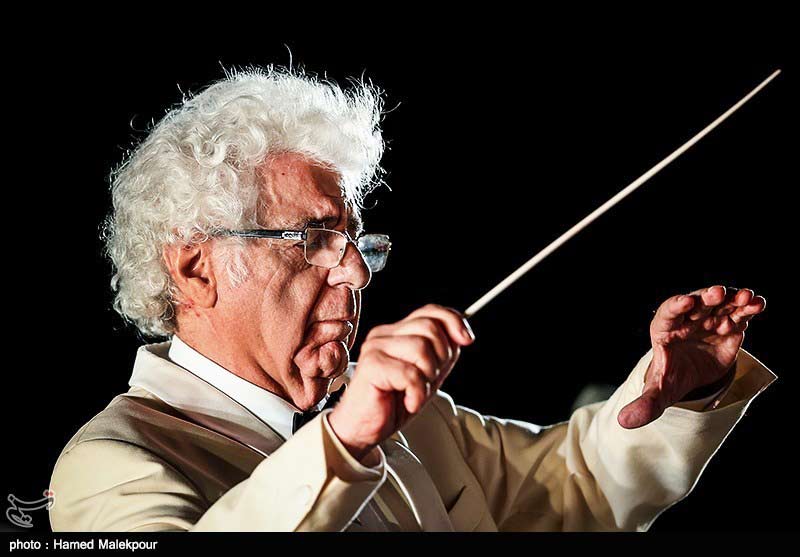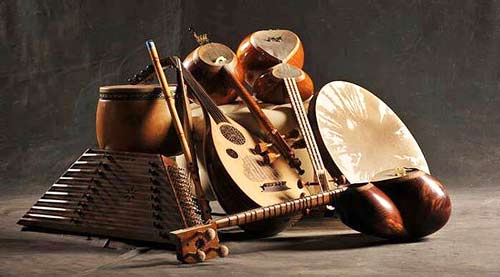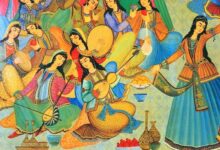Role of Armenians in the development of Iranian music

Armenian music has a history of thousands of years. Duduk, as an Armenian musical instrument, has an ancient history that dates back to about 1200 BC, that is, almost 3200 years ago. Another example is the cymbals that belong to the 7th century BC and were discovered in an area called Karmir Belor (Red Hill), which is also called Tishbani, in Armenia.
According to Artmag.ir, the purpose of this note, of course, is not to examine this antiquity, but only to the role and influence of Armenian Iranians in the progress, growth, maturity, growth and dynamics of Iranian music art in the contemporary era.
Yahya Tarsaz and improving the quality of tar making in Iran
Hohans Abkarian, known as “Master Yahya Tarsaz”, is known as one of the first professional makers of musical instruments and instruments in Iran, who from the very beginning of his work, considered a constant and continuous quality process for his work and made the most efforts to improve. The manufacturing process and, as a result, improved the quality of the tar used. The quality of this master’s work was such that Yahya’s tar is considered the best of tars and its sound is one of the best sounds emitted by a tar instrument, and this fact has been mentioned repeatedly in various sources.
The choice of wood, the method of making the bowl, the method of installing the handle to the bowl, the ratio of the size of the handle to the bowl, as well as the cutting of the inside of the bowl in the strings made by him, have been very precise and calculated. In the sources, it is mentioned that in 1933, two years after his death, Yahya’s string cost about 40 Tomans, while other professional strings were 15 Tomans and low quality strings were between 3 and 5 Tomans.
Master Yahya, whose date of birth is 1875 or 1876 in Isfahan, is mentioned in various sources, during his 56 years of life, he presented very high-quality and outstanding yarns to the art community and improved the process of making yarns, and finally, in his hometown, Died.

The series of conductors from Qajar to contemporary decades
The first orchestra of Nizam was established during the Qajar era by Brigadier Sokhumon Simonian, known as “Suleiman Khan”. The importance of this issue is due to the fact that reliable sources mainly mention four important orchestras during the Qajar period, that the government of the time somehow played a role in establishing or financing them. These four orchestras are the Nizam Orchestra, the Dar al-Funun Orchestra, the Royal Orchestra and the Orchestra of the High Music Academy. Therefore, one of the four important government orchestras during the Qajar era was founded by Suleiman Khan.
It should be noted that “High School of Music” was established during the Qajar era under the name “Music School” and later its name was changed to “State Music School”, then “Music Academy” and finally “High School of Music”.

Levon Grigoryan, is also among the pioneers of music in Iran. He formed a symphonic orchestra for the first time in the country and staged many famous works, including the famous opera “Anoush” which is a ballad by the famous Armenian composer “Armen Tigranyan” and its libretto is based on the same work. The name refers to the famous Armenian poet and writer “Hohans Tomanian”.
Levon Grigoryan, who was born in Tabriz in 1886, learned the basics of music up to the intermediate level in his hometown, and then went to Tbilisi to continue his studies and studied with the famous Russian violinist Vasilov, and then continued his studies in Brussels. After finishing his education, he returned to Tbilisi and spent some time there to gain more experience in the field of music and finally returned to his hometown.
He formed many orchestras and choirs in the cities of Rasht and Tabriz and taught music in these two cities and finally died in Tehran in 1957.
Ruben Grigorian, was also one of the country’s great musicians and the successor of his father, Levon Grigorian. He was born in 1915 when his father had settled in Tbilisi for the second time, and in 1917 he went to Tabriz with his father. Ruben was a graduate of the Higher Conservatory of Music in Tehran and later became the director of the same higher conservatory. He was the leader of the Tehran Symphony Orchestra and the guarantor of the country’s music department, and for some time he was a musician and concertmaster of the Boston Symphony Orchestra in America. Ruben Grigorian died in Boston in 1991.
Ruben Grigorian is the first person who collected many Iranian folk songs from all over the country and arranged them for four voices to perform in a choir.
Harair Galestyan, is among those who collaborated with him in collecting these songs. Ruben Grigorian was influenced by the famous Armenian composer “Aram Khachaturian”, but he had his own style for composing and arranging. He has also written many articles and books in the field of music.
The Father of modern Iranian songwriting
Varojan Hakhbandian, with the stage name “Varojan”, is one of the great composers of the country and one of the founders of pop music in Iran. Varujan, who was born in Qazvin in 1936, studied at the Tehran High School of Music and benefited from the knowledge and experiences of great teachers such as Ruben Grigorian. During his short life, he composed music for about 25 movies and several TV series, including the series “Sultan Sahibqaran” directed by Ali Hatami and starring Jamshid Meshaikhi.
Varujan died in 1977 in Tehran, when he was at the peak of his creativity, due to a heart attack. Various reliable sources have mentioned him with titles such as “the father of Iran’s modern songwriting”.
Gurgen Movsesian, in Armenian: Գուրգէն Մովսիսեան, is known as one of the most successful choir leaders in the country. Born in 1942 in Hamedan, he was the leader of the Radio and Broadcasting Choir Group, the Tehran Symphony Orchestra Choir Group and several other choir groups. He worked hard for the deaf groups and during his time, one of the most professional deaf groups was formed. Gurgen Movsesian died in 2014 in Los Angeles.
Loris Haykasi Tjeknavorian, whom most readers of this article probably know and are familiar with at least some of his valuable works, was born in 1937 in Borujerd. He studied music at Vienna Academy of Music, Mozarteum University of Salzburg and University of Michigan and has conducted many orchestras in Iran, Austria, England, America and Armenia in different years. In addition to being a very successful orchestra leader in the international arena, he has also been very successful in the field of composition and has composed many works, including a significant number of operas, ballets, symphonies, oratorios, suites, concertos and film scores.

Tjeknavorian, despite having many opportunities to emigrate, has always preferred to serve the country’s culture and art. The operas Rostam and Sohrab, Rostam and Esfandiar, Pardis and Parisa, Siavash, Zahhak, as well as the operas Shams and Molana are among the works of Loris Tjeknavorian.
In the end, I need to mention some other professors. Magerdom Karapetian was one of the first conductors of the orchestra in the country and established the first orchestra of string instruments in Iran and in the city of Isfahan.
Gohar Abian, was the first woman to graduate from the Tehran High School of Music, who later had many activities in the field of music.
Nicole Galandrian, was one of the prominent composers; So that some sources mention that he composed or arranged about 500 pieces of music and some other sources consider this number to be around 1000 pieces. The operetta “Butterfly” and the operetta “Shepherd” are works of Galandrian. He also taught music for many years.
Humbartsom Grigorian, also taught music for many years and it is stated in various sources that he wrote or arranged more than 200 pieces of music and performed most of them, and in addition to discussing music, he was also active in the press and he is one of the founders of the Armenian-language newspaper “Alik” in Iran.
Emanuel Malik Aslanian, who completed his music education in Germany, was a famous composer and a pianist with style, as well as a music master at Tehran University and the High School of Music.
Ivan Galamian, is known as one of the most influential violin teachers in the 20th century, who had a global reputation; In such a way that some of the world’s greatest violinists have studied with him.
Vahik Khojayan, (born November 19, 1929 – died September 17, 2015), who was called “Vaheh” by his friends, was a graduate of the Higher Conservatory of Music under the management of Rubik Grigorian, the conductor, the founder of the first orchestra of the National Radio of Iran, and a student of the Santa Chicilia Music School in Rome. Was. After graduating, he went to Italy and continued his studies, then returned to Iran and became the founder of the first National Radio Orchestra of Iran, and during various times, he was the leader of various orchestras inside and outside the country.
Andre Arzumanian, was one of the famous composers and pianists of the country. He had a special style in playing the piano and has been the composer of many movies.
Rafael Minaskanian, is also one of the famous pianists of the country who has been teaching music for many years.
Vartan Sahakian, is one of the graduates of the Faculty of Fine Arts of Tehran University and has a first degree in art. He has taught music in different universities and has composed music for movies as well as translated books in his professional portfolio.
Razmik Ohanian, is one of the country’s most prolific and famous composers, orchestra conductors and choir leaders, who has Iran’s first-class artistic certificate as well as the “Founder of Khornatsi” medal, which is considered the highest cultural sign of Armenia.
Loris Hovian, is from a relatively young and well-known generation of composers, conductors, choir leaders, and Iranian Armenian musicians who has a history of teaching music in several universities and is the founder of several orchestras and choirs.
Serzhik Mirzaian is also from the generation of relatively young Armenian-Iranian musicians who has created beautiful and lasting works and is a successful and talented orchestra leader and choir leader.
Andre Galestian – Music Researcher







